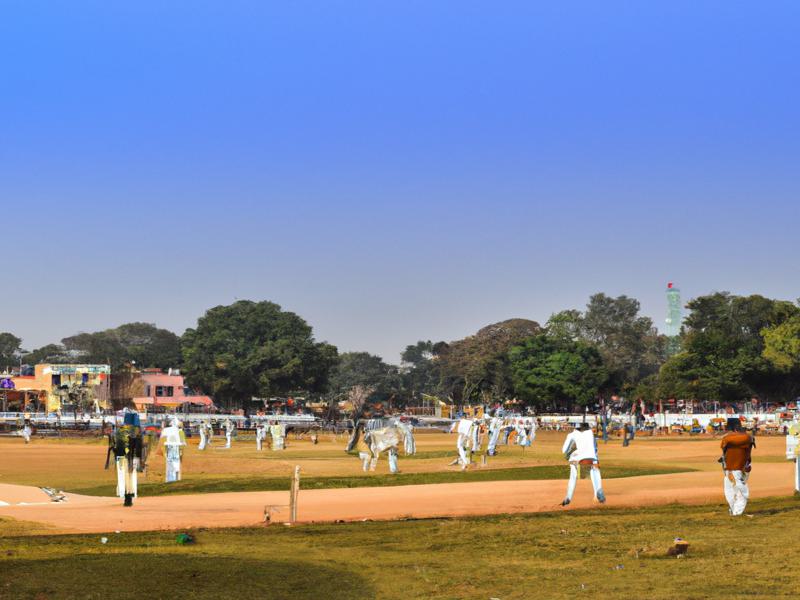
Cricbuzz.com reports that the Board of Control for Cricket in India (BCCI) has officially approved Torrent’s acquisition of the Gujarat Titans.
21.03.2025
Amid Controversy Over Public Critique of 1990s Pakistani Cricket Icons, Mohammad Hafeez Embarks on Damage Control Effort | Cricket News
22.03.2025**Turning Point: The Conundrum of International Cricket and Franchise Leagues**
By Telford Vice
The surfeit of cricket tournaments prompts introspection: can the world of cricket sustainably accommodate both international fixtures and burgeoning franchise leagues? In a mere span of days, South Africa’s Test series against Pakistan concluded just before the commencement of the SA20, which was quickly followed by the Tri-Nations series hosted in Pakistan, preceding the start of the Champions Trophy, and all culminating a mere fortnight before the IPL opener.
From December 15 to February 9, aficionados had the opportunity to witness a plethora of cricket including the Big Bash League, Bangladesh Premier League, South Africa’s SA20, and UAE’s ILT20. During this 57-day stretch, 27 teams engaged in 158 games, averaging approximately 2.78 matches per day. Concurrently, 32 international men’s teams competed in 122 matches, divided into 22 Tests, 26 ODIs, and 74 T20Is. Overall, this amounted to 280 cricket matches – an equivalent of 4.91 daily encounters when including Tests.
Given the digital and mental bandwidth required to keep track of this relentless schedule, one must ponder if this is sustainable. Something surely must give. The oft-repeated assertion is that franchise T20 leagues are diluting cricket, evolving the sport into a spectacle vastly different from its pre-IPL days.
However, might it be time for international cricket to adjust and potentially cede ground to the surging franchise T20 leagues? Dinesh Karthik, an experienced figure in cricket’s modernity with six IPL franchises to his name alongside significant international wickets, argues that leagues should enrich the host country’s cricketing prowess rather than merely exist for profit.
Karthik opines that international cricket retains an essential role, crucial to sustaining cricket globally, advocating a balance between franchise ascendance and international integrity. This resonates with Tom Moffat, CEO of the World Cricketers’ Association, who contends that franchise leagues aren’t merely financial ventures but have reinvigorated the game, attracting new audiences and providing novel opportunities for players.
Yet, the logistical and calendar conflicts between existing leagues and traditional international cricket present a challenge. As Moffat notes, without a cohesive management structure on a global scale, the franchise model may eventually overshadow traditional formats. Nevertheless, the way forward must consider sustaining international cricket’s economic foundations, which still underpin much of the sport’s operational framework, primarily driving revenue through ICC events and bilateral series.
The increase in league-oriented matches presents a seismic shift. With leagues hosting 1,039 games by 2024, compared to 833 international matches, where T20I contests dominate the scene, this shift indicates a movement that cannot easily be reversed. Karthik stresses the need for the ICC to judiciously validate leagues, ensuring they contribute positively to domestic cricket development.
In examining how Indian players, due to regulatory constraints, participate only domestically in foreign franchise cricket, Karthik recognizes that opening these avenues could potentially undermine domestic structures. For instance, the IPL’s financial allure surpasses most national board remunerations, complicating balance for boards like those in South Africa, acknowledged for producing surplus quality talent unable to be absorbed domestically.
India’s cricketing infrastructure, lauded by Karthik, not only sets standards but also entices fans globally, evidenced by the turnout for India’s matches. This underscores the enduring allure of Test cricket and the existing market for traditional formats which remain significant draws for spectators worldwide.
The SA20’s model of attracting crowds by relinquishing traditional nation-building themes in favor of franchise allegiance underscores a pivotal shift, where individual talent, rather than national colors, garners audience engagement.
In this modern era, the convergence of international cricket with burgeoning franchise leagues presents both challenges and opportunities. The balance between these domains will shape the future landscape of the sport, possibly requiring adaptive strategies and foresight to ensure a thriving and sustainable ecosystem for cricket enthusiasts worldwide.
© Cricbuzz
**Tags:** Indian Premier League 2025
**Related Stories:**
– IPL Meet: Captains Exempt from Match Bans for Slow Over-Rates
– Bumrah Back at the NCA amid Renewed Optimism of a Quick Return
– IPL 2025: Saliva Ban Lifted, Two Balls for the 2nd Innings
– Riyan Parag to Lead RR for First Three Games
– Bumrah-Less MI Eager to Break the First-Game Jinx
– A New Captain but Familiar Challenges Await Royal Challengers Bengaluru


